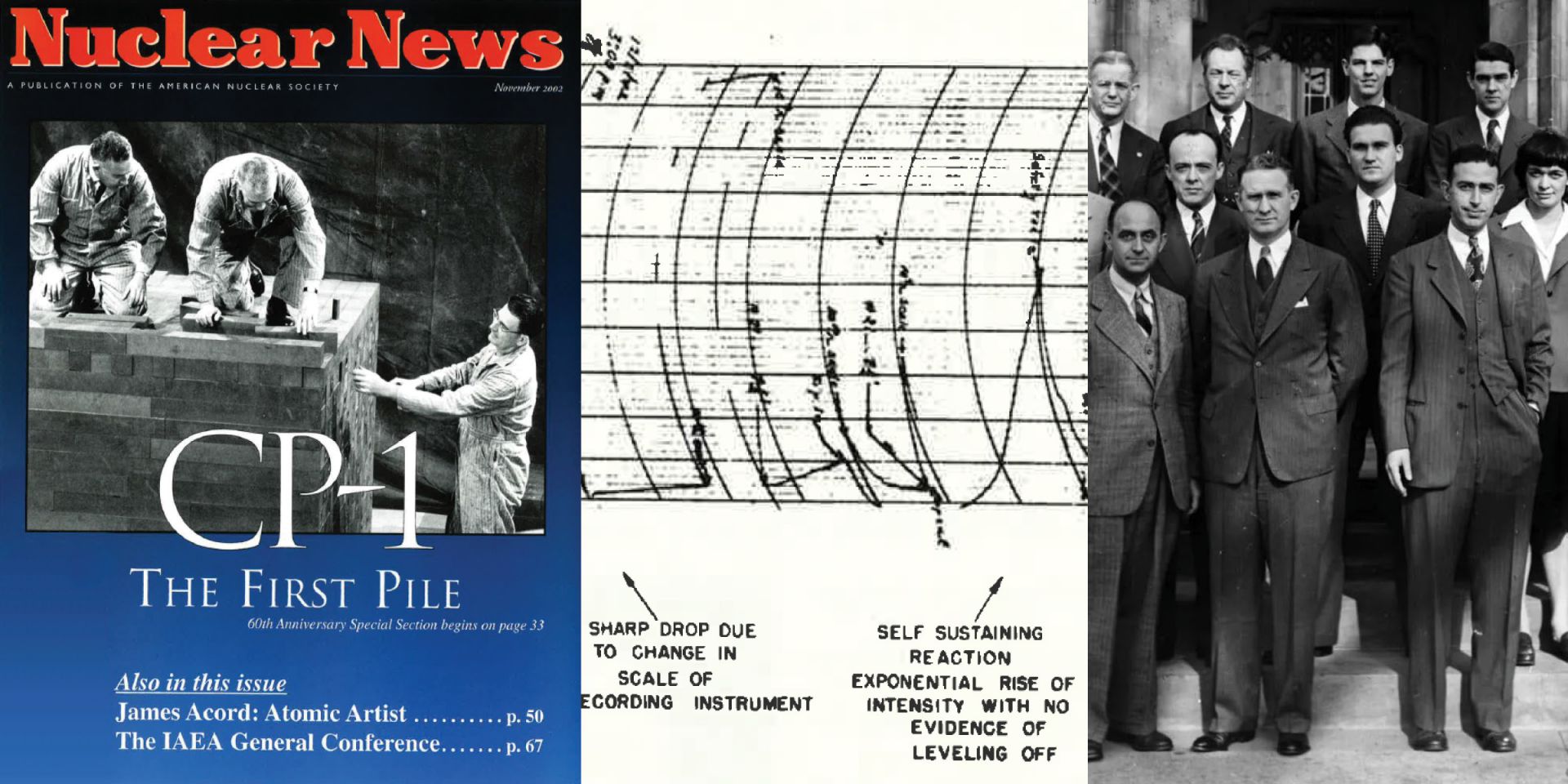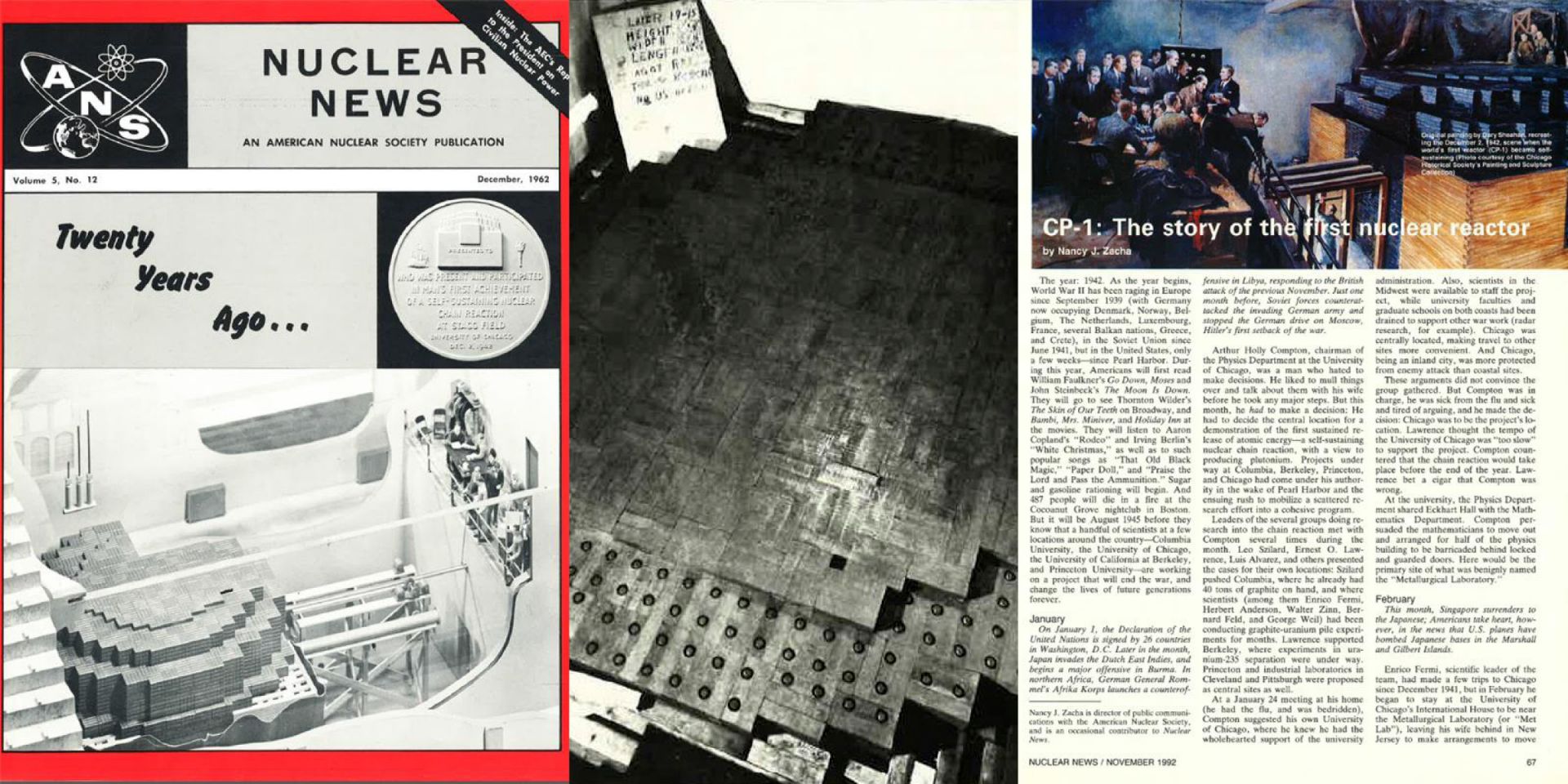On December 2, 1942, a group of 49 scientists led by Enrico Fermi created the world’s first controlled, self-sustaining nuclear chain reaction underneath the University of Chicago’s Stagg Field football stadium. Some of those present went on to found Argonne National Laboratory. (Image: Argonne)
At a moment of global crisis, in a windowless squash court below the football stadium bleachers at the University of Chicago, a group of scientists changed the world forever.
On December 2, 1942, a team of researchers led by Enrico Fermi, an Italian refugee, successfully achieved the world’s first human-created, self-sustaining nuclear chain reaction. Racing to beat Nazi Germany to the creation of an atomic weapon, the team of researchers, working as part of the Manhattan Project, split uranium atoms contained within a large graphite pile—Chicago Pile-1, the first nuclear reactor ever built.
From left, the cover of the December 1962 issue of NN, featuring a model and a medal, both displayed at the 1962 ANS Winter Meeting; a photo of CP-1 during construction, as published in the November 1992 issue of NN; the opening page of a chronological account of CP-1, published in November 1992 to mark the 50th anniversary.
As we approach the 80th anniversary of controlled nuclear fission, Nuclear Newswire is prepared to deliver not one but three #ThrowbackThursday posts of CP-1 highlights unearthed from past issues of Nuclear News.
ANS was founded in 1954, nearly 12 years after the first controlled nuclear chain reaction was achieved on December 2, 1942, inside a pile of graphite and uranium assembled on a squash court at the University of Chicago’s Stagg Field. By 1962, ANS was prepared to “salute the 20th anniversary of the first chain reaction” at their Winter Meeting, displaying a model of Chicago Pile-1 and presenting a specially cast medal to Walter Zinn, a representative of Enrico Fermi’s scientific team. Over the years, ANS has continued to mark significant anniversaries of CP-1 at national meetings and in NN.





